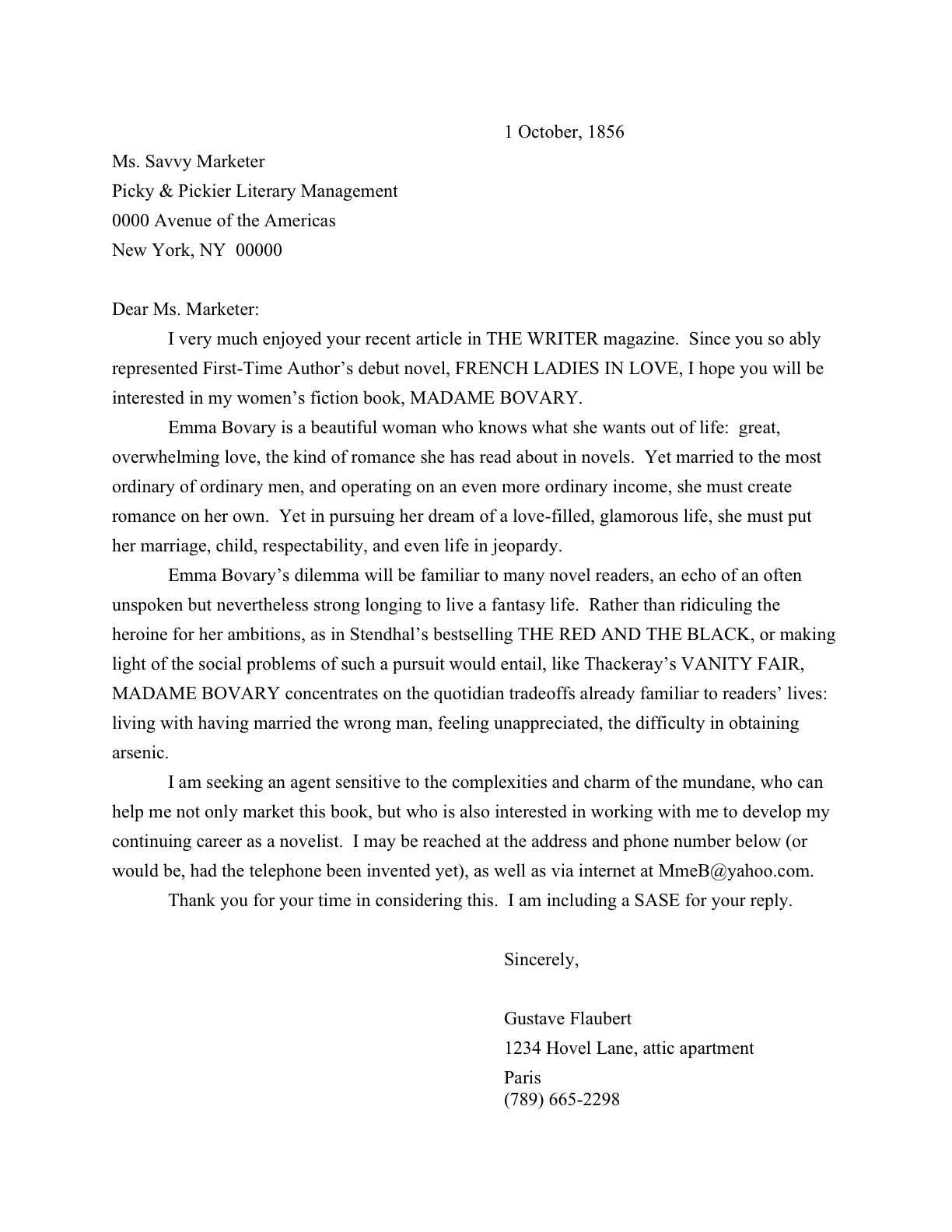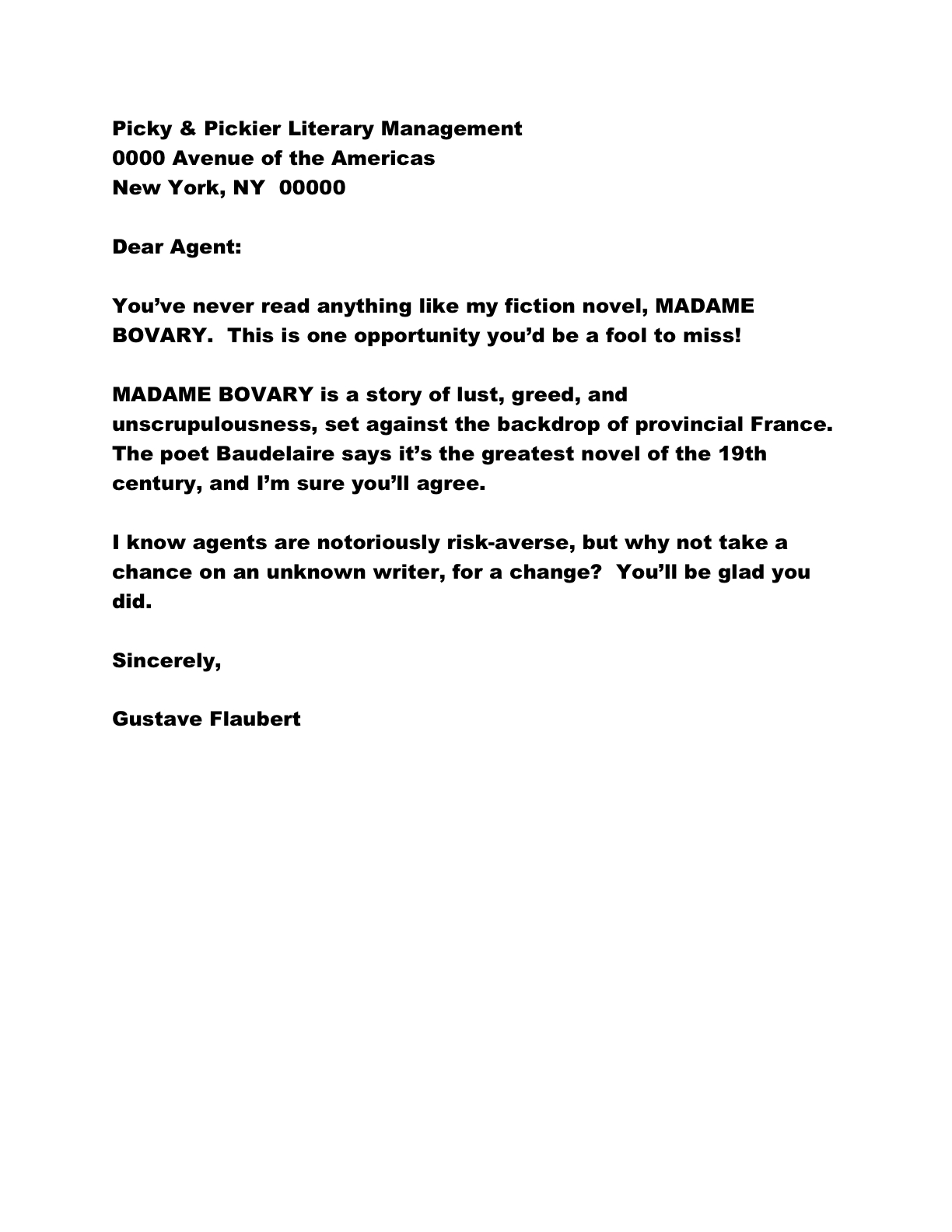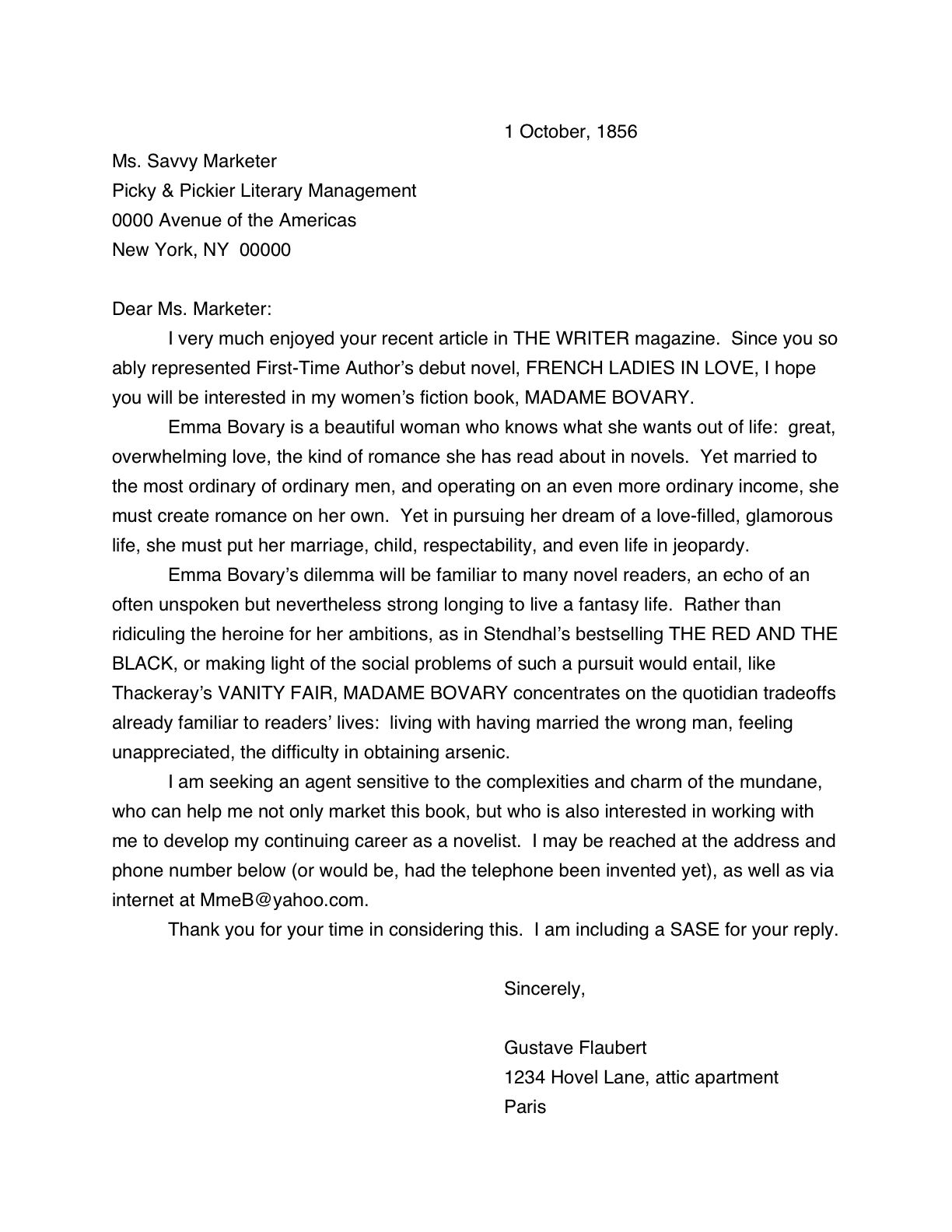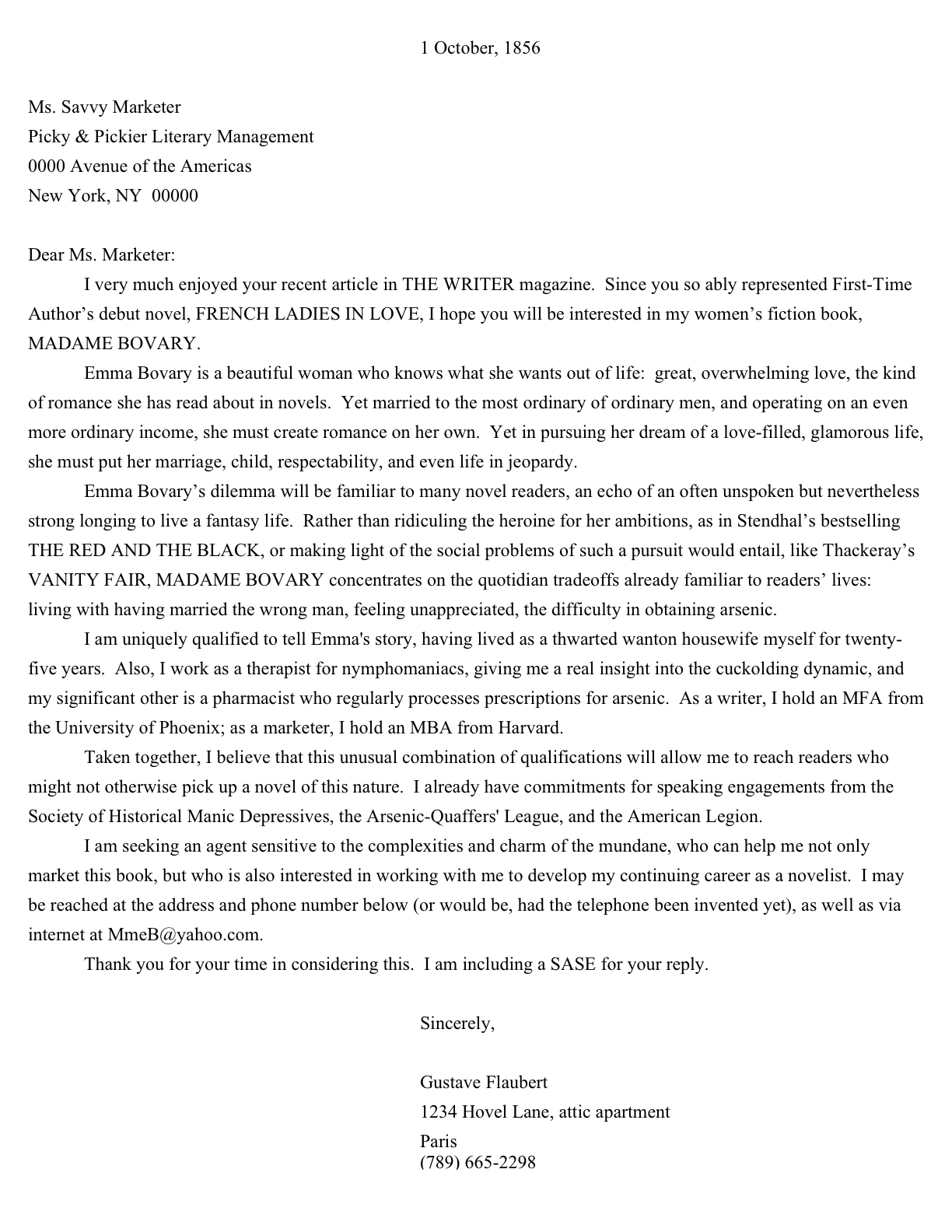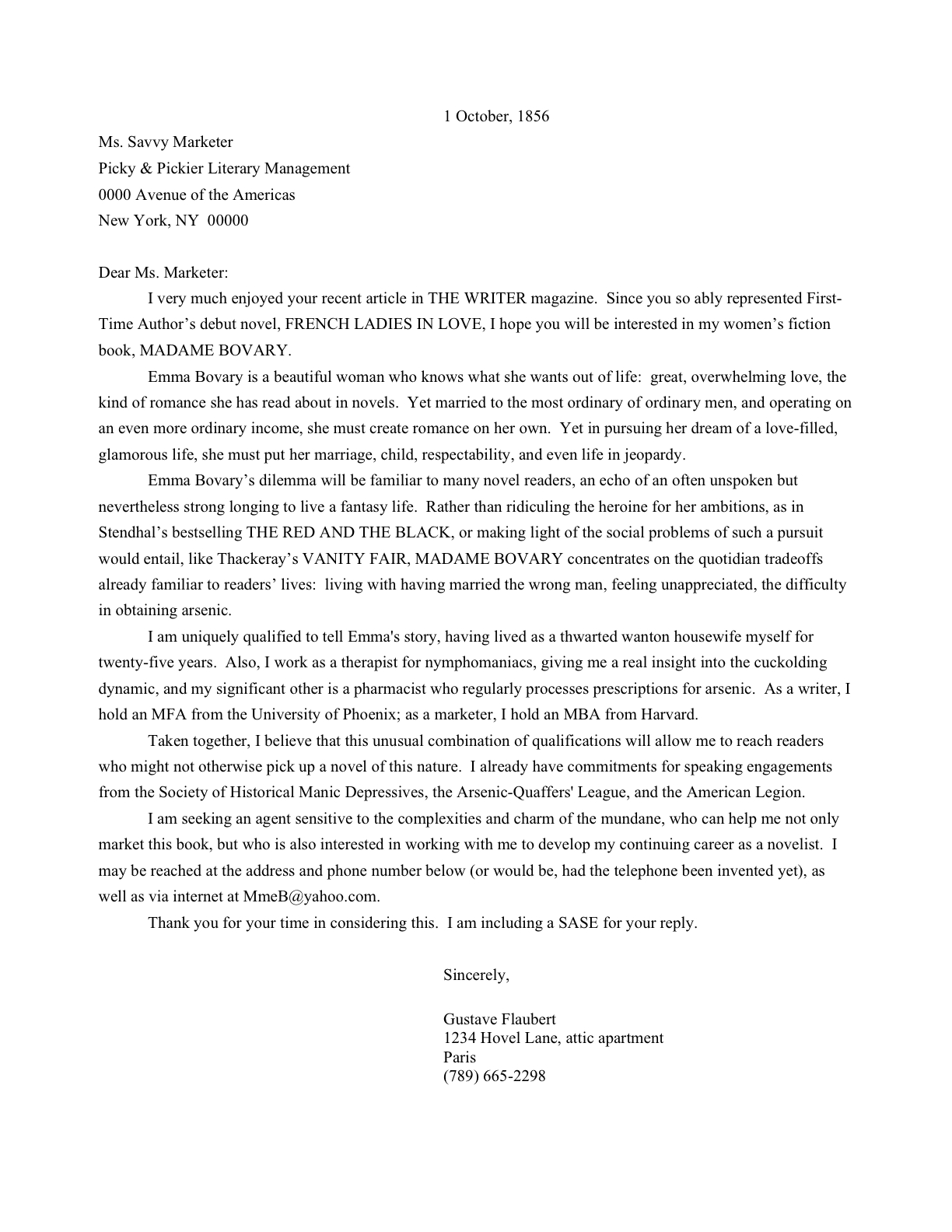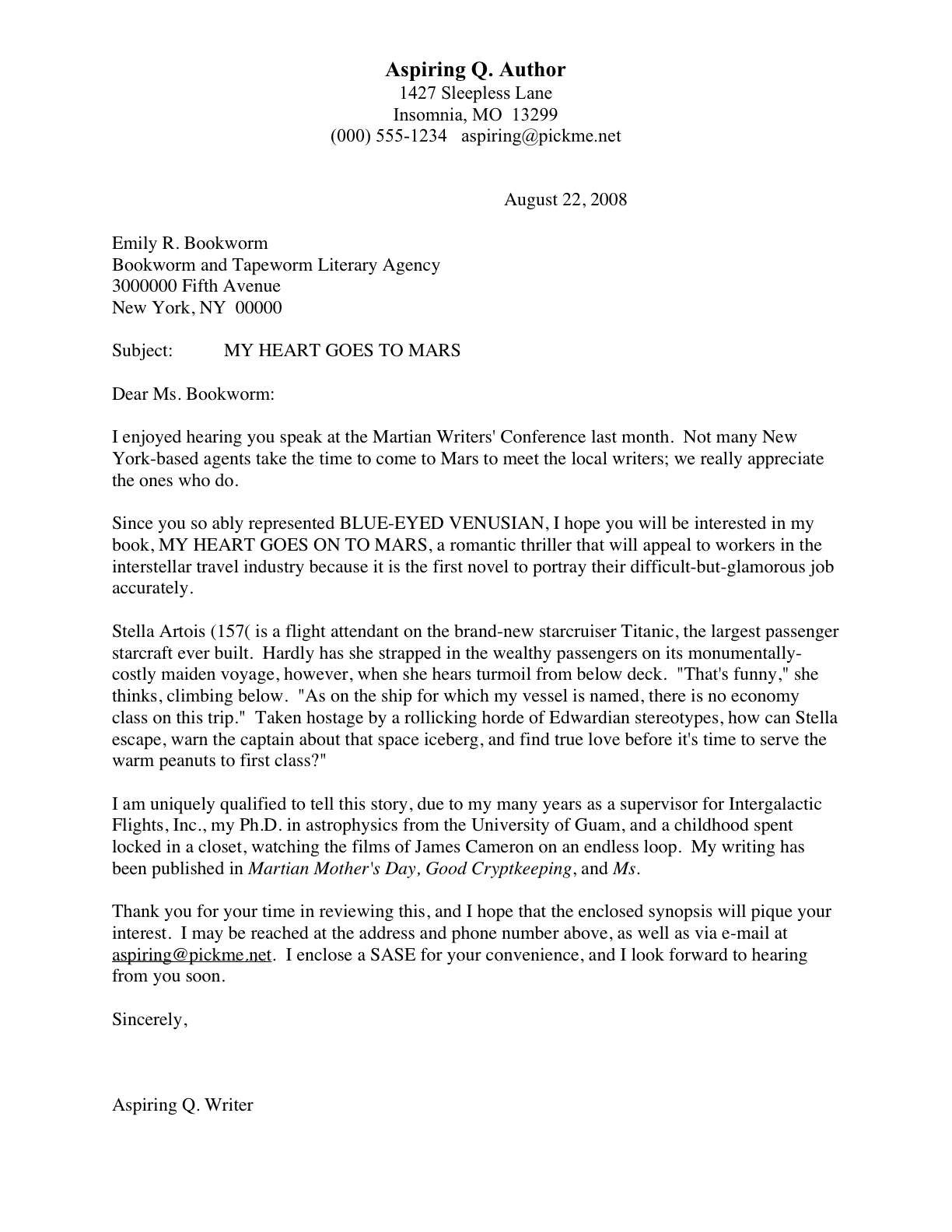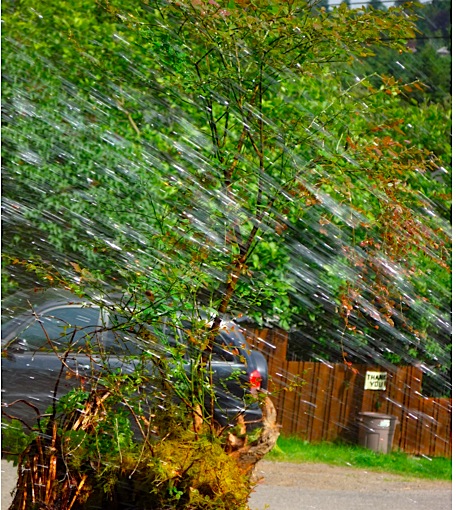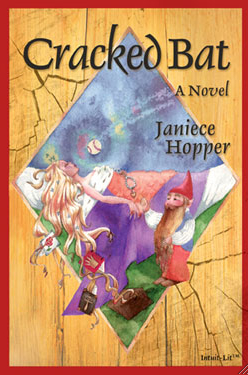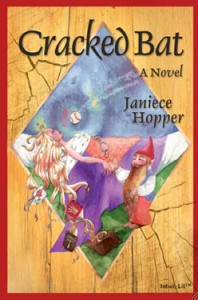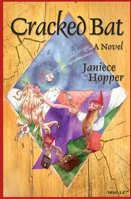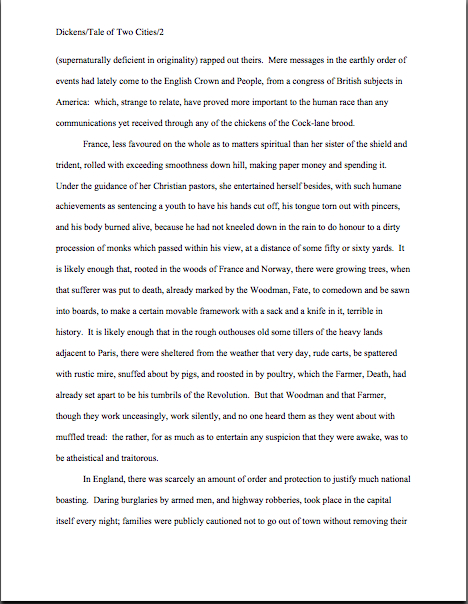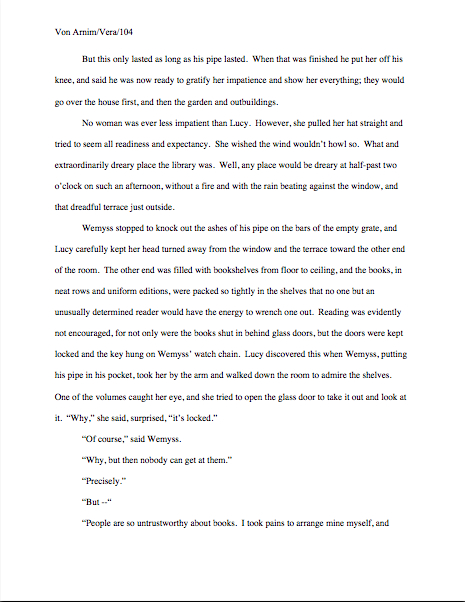Autumn’s in the air, which means two things in my line of work: the release this year’s crop of literary fiction likely to be nominated for major awards and Millicent the agency screener, her boss, and the editors to whom the latter likes to pitch getting back to work, digging their respective ways through the piles upon piles of submissions lingering after the annual summer hiatus, not to mention the new, post-conference submissions..
It is, in short, a great time to be querying and submitting.
Since I know that many of you are spending your weekends/spare time/whenever your boss isn’t looking over your shoulder at work pulling together lists of agents to query, this seemed like an especially good moment to answer a question sharp-eyed reader Jake asked a few months back:
Just to be sure, if an agency does say it only accepts clients through recommendations, am I to assume they’re listing off these guidelines, but expecting to see the recommendation in the query? (I don’t actually know anyone who can refer me, but I’m wondering if querying these agents anyway is worth the hassle or a waste of time and money)
Before I answer Jake’s question, let’s define our terms, shall we? In some agency guides, agencies will list themselves as accepting clients by referral . In plain English, this means that a querier who has not either been invited by one of their agents to submit or had the way smoothed by a third party might as well not query at all.
Don’t call us, in other words; we’ll — well, actually, we won’t call you.
A more common notation is accepts clients mostly through recommendations — and here, the unconnected writer need not despair as thoroughly. It’s a simple statement of fact, information a would-be querier needs to know: this agency is more likely to pick up a new client through a referral than via a cold query.
So to whom do such agencies look for these recommendations, referrals, and general good word of mouth — and how does an aspiring writer go about procuring same?
Most of the time, agents receive referrals from their already-signed clients — and not necessarily those who already have books out, by the way — editors who have met writers at conferences, journalists, their college roommates…in short, from the people they know.
Which is why, in case those of you living outside the greater New York City metropolitan area have been wondering, you’re far more likely to hear authors from that part of the country say at book readings, “How did I meet my agent? Oh, networking,” than those domiciled anywhere else.
That is not to say that writers residing elsewhere need write off this means of entrée into an agency. It’s merely a little more work.
Okay, so it’s a lot more work, but often worth it: even at an agency that obtains new clients mostly through querying and conference-trolling, a recommendation from a standing client, particularly one they like, does tend to increase the likelihood of being asked to send pages.
Why? Well, good writers who have been kicking around in the field for a while tend to know other good writers — or, at any rate, know ones who have done their homework about what being a professional writer means, over and above being talented: presenting a manuscript in standard format, the desirability of meeting deadlines without undue whining, and the learned skill of taking intensive feedback without regarding it as a personal attack, to name but three desirata.
How might a professional writer spot these traits in others? By being in a critique group with them, for one thing, or by exchanging manuscripts. A perceptive observer can learn a lot about a writer by how s/he responds to feedback.
Kind of changes how you might think of joining a writers’ group, doesn’t it, or staying in one? One of those people might well hit the big time someday and be in a position to say either, “Clarice? Oh, she’s a great writer, really even-tempered,” or “Well, Clarice is talented enough, but if you suggest changing so much as a comma in her work, she bursts into noisy tears and accuses you of trying to poison her.”
If that last comment seemed like an exaggeration to you, you either haven’t been in many critique groups or have been fortunate enough to be in really good ones.
Most of the time, though, aspiring writers pick up referrals to agents in the most straightforward manner imaginable: by walking up to an established writer IN THEIR BOOK CATEGORY (important; an author in another genre may reasonably be expected to be able to provide a referral to an agent with a track record of selling books in his own book category, but not necessarily in others) at a book reading, conference, or other literary occasion, striking up a conversation, and eventually, asking for a referral to the author’s agent.
It’s the eventually part that tends to be problematic. Too many aspiring writers just blurt out the request right away, with little or no preamble.
To understand why this might land the requester in hot water, let’s take the case of Isabelle.
Referral-farming scenario 1: Isabelle notices in her local paper that Ignatz, a writer whose work is similar to hers and is aimed at the same target market will be giving a reading at a local bookstore. She makes a point of attending the reading, and during question time, asks who represents him – and asks permission to use him as a query reference.
Ignatz laughs uncomfortably, tells an agent-related anecdote, and when she presses for a name, tells her to see him afterward.
Isabelle waits patiently until all those who have bought books have presented them to Ignatz for signing, then repeats her question. “I haven’t read your book,” she tells him, “but from the reviews, our work has a lot in common.”
Ignatz, professional to the toes of his well-polished boots, casts only a fleeting glance at her empty hands before replying. “I’m sorry,” he says, “my agent has asked me not to refer any new writers to him.”
What did Isabelle do wrong? (And, for extra credit, what about Ignatz’s response marks it as a brush-off?)
Isabelle committed two cardinal sins of author approach. First, she did not evince ANY interest in Ignatz’s work before asking him for a favor — and a fairly hefty favor, at that. She did not even bother to buy his book, which is, after all, how Ignatz pays his rent. But since he is quite aware, as any successful writer must be, that being rude to potential readers may mean lost business down the line, he can hardly tell her so directly.
So he did the next best thing: he lied about his agent’s openness to referrals.
How do I know he lied? Experience, my dears, experience: had his agent actually not been accepting new clients, his easiest way out would have been simply to say so, but he did not. And, realistically, most agents rather like it when their clients recommend new writers; it saves the agent trouble, to use the client as a screener.
Hey, who doesn’t like to have someone to blame if a blind date goes horribly, horribly wrong?
So, generally speaking, if an agented writer says, “Oh, my agent doesn’t like me to recommend,” he really means, “I don’t like being placed in this position, and I wish you would go away.”
How has Isabelle placed Ignatz in a tough position? Because she has committed another approach faux pas: she asked for a reference from someone who has never read her work.
From Ignatz’s point of view, this is a no-win situation. He has absolutely no idea if Isabelle can write – and to ask to see her work would be to donate his time gratis to someone who has just been quite rude to him. Yet if he says yes without reading her work, and Isabelle turns out to be a terrible writer (or a terrible pest), his agent is going to be annoyed with him. And if he just says, “No, I don’t read the work of every yahoo who accosts me at a reading,” he will alienate a potential book buyer.
So lying about his agent’s availability is Ignatz’s least self-destructive way out. Who can blame him for taking it?
Let’s hope and pray that Isabelle has learned something from this encounter. Manuscript in hand, let’s send her to another reading.
Referral-farming scenario 2: Isabelle spots another reading announcement in her local newspaper. This time, it’s an author whose work she’s read, Juanita; wisely, she digs up her dog-eared copy of Juanita’s first novel and brings it along to be signed, to demonstrate her ongoing willingness to support Juanita’s career.
She also, less promisingly, brings along a copy of her own manuscript.
After the reading, Isabelle stands in line to have her book signed. While Juanita is graciously chatting with her about the inscription, Isabelle slaps her 500-page manuscript onto the signing table. “Would you read this?” she asks. “And then recommend me to your agent?”
Juanita casts a panicked glance around the room, clearly seeking an escape route. “I’m afraid I don’t have time to read anything new right now,” she says, shrinking away from the pile of papers. “Oh, my phone is vibrating — will you excuse me, please?”
This, believe it or not, happens even more that the first scenario – and with even greater frequency at writers’ conferences. Just as some writers have a hard time remembering that agents have ongoing projects, lives, other clients, etc. whose interests may preclude dropping everything to pay attention to a new writer, so too do established writers – many, if not most, of whom teach writing classes and give lectures in order to supplement their incomes.
So basically, Isabelle has just asked a professional author to give a private critique of her manuscript for free. Not the best means of winning friends and influencing people, generally speaking.
Yes, the process of finding an agent is frustrating, but do try to bear in mind what you are asking when you request help from another writer. Just as querying and pitching necessarily cuts into your precious writing time, so do requests of this nature cut into established writers’ writing time. Other than your admiration and gratitude, tell me, what does the author who helps you get out of it?
This not to say that some established writers aren’t willing to offer this kind of help; many do, and some of them like it. (Others charge a pretty penny for it, but that’s another story.) But even the most generous person tends to be nonplused when total strangers demand immense favors.
Establishing some sort of a relationship first – even if that relationship consists of nothing more than the five-minute conversation about the author’s work that precedes the question, “So, what do you write?” – is considered a polite first step.
In other words: whatever happened to foreplay, baby?
Don’t jump the gun, my friends. Remember, established writers are climbing up the publishing ladder, too, and respect their time accordingly. Make the effort to read, or at least buy, an author’s work before you approach her – and producing a little well-phrased, well-informed flattery never hurts, either.
I want to run through a few other examples illustrating the dos and don’ts of approaching an author for a recommendation, but that’s a project for another day. Right now, for the sake of confining the answer to Jake’s question to a single post (the easier to find it in the archives, my dear), let’s address the question of how an aspiring writer lucky enough to garner such a recommendation should USE it.
Jake’s assumption is correct: whatever else an agency says in its listing or on its website still applies when you have a referral. A referred writer should not, for instance, send an unsolicited manuscript or telephone and say, “Your client, Penny Scribbler, told me to contact you.”
A much, much better — not to say more courteous — approach would be to send a query letter beginning, “Your client, Penny Scribbler, suggested that I contact you about my thriller, BODY PARTS…” and proceeding like any other query letter targeting that particular agent.
That way, the agent or her Millicent knows from line 1 precisely why you are contacting her — and that she might want to pay a bit more attention to this query.
Naturally, you should ONLY open a query in this manner if Penny Scribbler actually did refer you — and if Penny’s agency makes it clear in its agency guide listings or on its website that it’s not very open to queries unaccompanied by a referral, think very carefully about whether it is worth your while to approach her agent without one. I have known a couple of writers who have landed agents by cold-querying agents who list themselves as requiring referrals, but it’s extremely rare that someone gets picked up that way, for all of the obvious reasons.
Personally, I would hold off.
However, if an agent that’s listed in a guide as only accepting referred queries seems like a particularly good fit for your book, it’s worth checking its website to see if that policy is still in effect, if every agent within the agency operates that way, etc. Sometimes, guide listings are out of date; unless there’s been a big personnel shift, many agencies will simply use the same listing for years. A new agent at such an agency may well be looking for new clients.
But, generally speaking, when agents set the referral limitation, they mean it.
Another reason to check out their websites, latest listings, etc., is to find out who their clients are and see if THEY have websites, give readings, etc. Many a writer who has written a fan letter has ended up with a recommendation to the author’s agent down the line.
Which brings us right back to Isabelle’s situation, doesn’t it? As I said, that’s a topic for another day. Next time, I shall run through a few more of the common gaffes eager referral-seekers tend to commit — because, after all, it’s far, far better that my fictional exemplars stumble into those gopher holes than my readers, right?
Keep up the good work!









